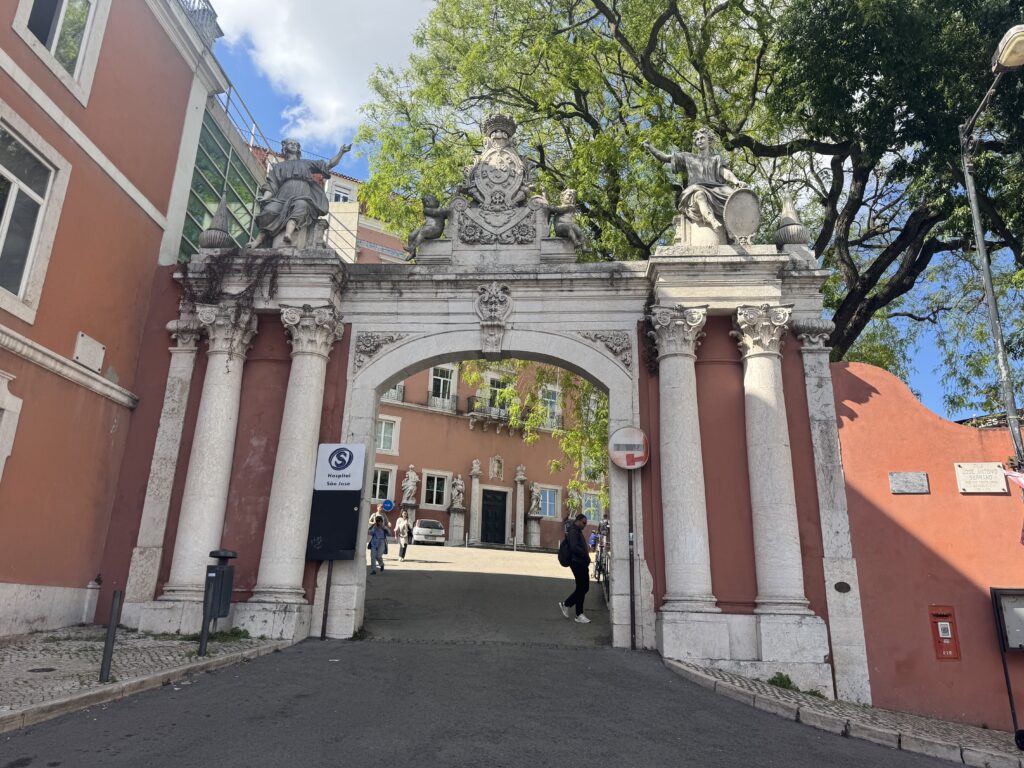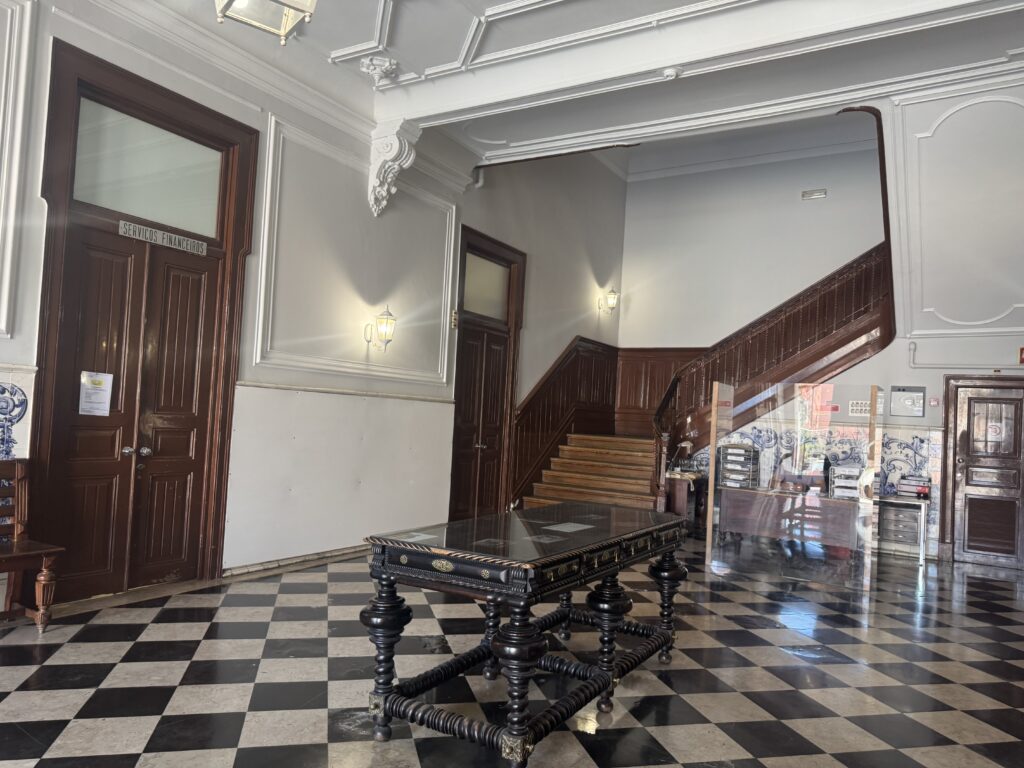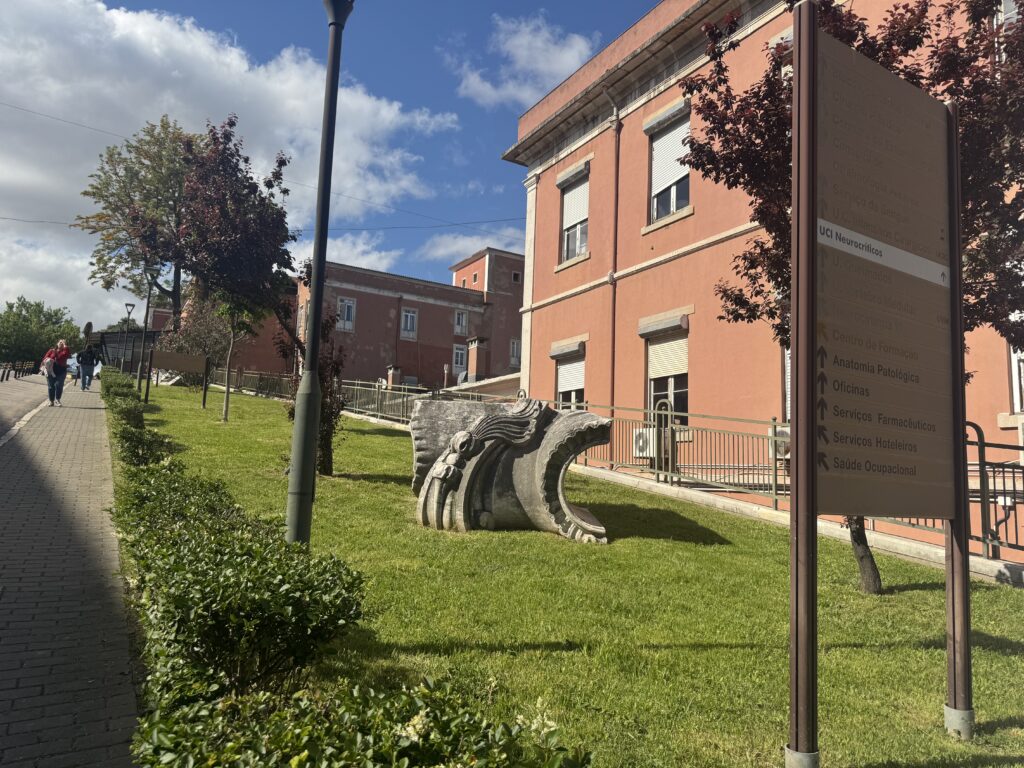The Hospital de São José, has a history that dates back to 1579 when the construction of the building was ordered by Cardinal Henry of Portugal to be a Jesuit-run College. The college occupied the building by 1593, and was called Colegio de Santa Antao-o—Novo. (Citation: https://en.wikipedia.org/…/Hospital_de_S%C3%A3o_Jos%C3….) In 1755, there was a high-magnitude and disastrous earthquake and subsequent tsunami and firestorm that hit Lisbon, causing damage and killing many inhabitants of Lisbon. The Hospital of the time, Royal Hospital of All Saints was majorly destroyed so all the patients were relocated to the college building location, and it was converted soon after that to be the Hospital de Sao Jose. The Jesuit college was donated to All Saints’ by royal charter. Like Saint Joseph’s, this new Hospital became Portugal’s greatest School of surgery. In 1844 thru to the beginning of the 1900s, many hospitals in the area were moved to become institutionally combined with Sao Jose. This includes Rilhafoles Mental Asylum, The Desterro Hospital, Hospital de Dona Estefania, Hospital de Arroios, Hospital de Santa Marta, and the list goes on… The Hospital then became the “Civil Hospital of Lisbon,” and officially became Hospital de Sao Jose in 1775. It wasn’t until 10 years after the earthquake, that Marquis of Pombal determined that Sao Jose Royal Hospital would substitute the All Saints Royal Hospital that had collapsed. The building underwent renovations to help aid it to serve its new purpose. Pombal is well-known for his role in helping rebuild Lisbon after the earthquake, and he led a movement in design to develop Pombaline architecture which was an innovative earthquake-resistant style that was used to construct the Baixa district. Most notably, the new style had a timber framework within masonry which was designed to resist seismic forces. (Citation: https://www.re-thinkingthefuture.com/…/a14034…/….)

This building now still serves its community as a major teaching hospital with the NOVA Medical School training the next physicians of the future. (Citation: https://www.lisbon.vip/…/saint-joseph-s-hospital…) The hospital today has many departments like cardiology, urology, surgery, pediatrics, orthopedics and oncology to name a few. The hospital is easily reached by public transportation and is a central location convenient to Lisbon’s city center so it can be accessed easily by its patient population.

The reason why I took such an interest in this site was because it seems to me that this facility saved many who suffered after a major disaster and provided a much-needed service and haven for those suffering during the earthquake’s aftermath. It was of interest that this building which had parts of it survive the major earthquake and was constructed using institutional means of construction that uniquely made it able to be adapted from a University to a Hospital. Questions I wanted to investigate were: what made this site less likely to be damaged by an earthquake and a fire, what materials uniquely protected and saved this structure, what inherent value to the community must it have had and still has today to be of use from the 16th century until today?

It’s hard to find a building more than 250 years old, because the buildings that are older are a rare survivor after the Earthquake of 1755. Back at that time, Portugal was a respected empire which owned Brazil and Angola and was the foremost port of the Atlantic seaboard and was the third most important port in Europe, but after this date its influence was seriously compromised. Since the Hospital Sao Jose is up on the hill, it was not as impacted by the Tsunami the slope protected the Hospital. On the day of the earthquake, 400 of the patients in the Hospital of All Saints were killed by the subsequent fires after the event. The reason that the facility survived is that it was renovated and adapted and expanded upon much during its time, and even the Igreja de São José do Hospital (Church of Saint Joseph of the Hospital) an original structure had its facades entirely replaced in order to preserved it. There is some original plasterwork pediments preserved, but the facility as it stands today is a combination of historical and modern constructions. Colegio de Santo Antao-o-Novo was not damaged by the fires that followed the quake because it was located far from the city center, where the fires caused most of their destruction. On the other hand, one article I read stated that there are columns that were reused in Church of Sao Jose Anunciada in the side of the high altar that came from the demolition of the church of the school of Santa Antao-o-Novo. (Citation: https://getlisbon.com/disco…/columns-earthquake-displaced/)

As I walked around the site, I noted that portions of the arched gate were likely very historic and at least a couple of centuries old since it was Baroque style. Other than that, I only identified that the stone remnants scattered on the grounds of the Hospital are likely preserved to represent the original structures and materials of the Jesuit College of Santa Antao-o-Novo. I asked staff if I could see an archive or library portion of the building that might showcase the history of the Hospital, and they let me know that the library onsite is only to be used by physicians which was unfortunate to these (my) studies. Most of the building is modern, primarily facades finished with stucco which is used for decorative and protective purposes widely throughout Lisbon. Overall, it is clear how destructive the earthquake of 1755 was, and how it shaped Lisbon into a city with a grid-like urban design and architecture prevalent after that time. It is also clear how important vestiges of the past were to the people of Lisbon, that they worked to save, incorporate and preserve as much as possible the materials into structures that still survive today.
